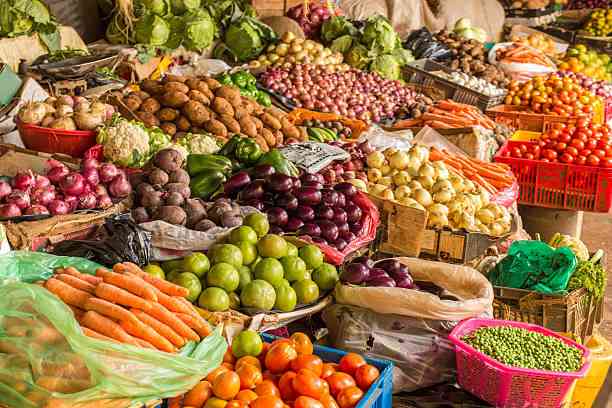
BY pooling commodities from diverse production zones, African territorial mass markets have become genuine centres of excellence on food systems where a question about any food commodity receives answers from farmers, traders and consumers who interact in the same space.
However, the pace at which these markets are growing calls for creative innovation in how they can be modernised without losing the African flavour and identity which make them different from shopping malls and supermarkets.
Some of the unique African flavours that should be retained in the modernisation process include playful haggling for customers, same pricing models for the same product, knowledge as a public good and diverse measurements.
Key modern aspects that are needed include facilities that reinforce good hygiene, water reticulation, lighting, paving and general neatness.
What makes territorial markets special
Several characteristics of territorial markets make them special and appealing to the majority of Africans. If every African smallholder farmer is to produce commodities to his/her full capacity, food loss would double in most African countries because formal markets like supermarkets, wholesalers and processing companies cannot handle all the commodities.
Besides taking a few quantities, supermarkets tend to take grade A commodities only. What happens to the rest of the grades that are produced using the same water, energy, labour, fertiliser and other inputs? This is where mass markets become critical as food aggregators, distributors and price setters for other markets.
The power of Afrocentric packaging and food delivery mechanisms
- How African mass food markets decolonise, moderate the cost of living
- African mass food markets research data grossly underrated
- Transitioning pathways from projects to community investments
- How African mass markets make productive use of gossip and the grapevine
Keep Reading
While many African governments associate progressive markets with supermarkets, shopping malls and processing companies, these do not have critical elements that are found in territorial markets. Some of the enduring flavours and identity aspects are around packaging and how commodities are delivered to the market. For instance, in the Mbare market of Harare and Nakawa in Kampala, the most common transport ranges from one-tonne trucks to 30-tonne trucks bringing commodities from diverse production zones. Some trucks come from neighbouring countries. For instance, in Nakawa, some trucks come from Kenya while in Mbare some come from South Africa where they bring fruits. Transporters have built strong relationships through runners who find business for them. Many traders also use public transport to bring commodities from distant remote farming areas where big trucks cannot reach due to poor road networks especially during rainy seasons.
Units of measurement are driven by how you want to sell
In Zimbabwe, more than 45% of potato packaging pockets are sold through Mbare mass food market. There are specialists who import and sell packaging material much cheaper than formal companies. In most cases, the same pockets are used to pack onions, butternuts, garlic and others. Another business is plastic polybags used in the market and by vendors for packing chilli pepper, okra and other commodities. Mbare also sells huge volumes of different sizes of sacks including 50kg bags in circulation, all types, some new and others re-used. Companies that import bran, flour and feedstock often dispose of the sacks at Mbare.
Saseka and Semia: Like most packaging, the choice for using saseka/semia was informed by vendors of butternuts and cucumber more than a decade ago. When these vendors tried to break bulk from 50kg into heaps they discovered that the 50kg bag contained less commodities and as they stumbled on the 62kg saseka, they found it more user-friendly in breaking bulk, heaping and other forms of repackaging that happen in smaller residential markets. The other influence came from transportation where it was discovered that given that transporters charge per bag and not per entire load, the 50kg was expensive to transport while it contained fewer commodities. The 62kg saseka/semia was found to be easy to load and tie on the truck and carried more commodities.
Wooden crates: These came into use through communal tomato production but are gradually being replaced by plastic sandaks. The 8kg wooden box was also targeted at low-income consumers who cannot afford large packages. However, there is no research on the possibility of coming up with an alternative container that can replace the wooden box and of smaller weight. Packaging manufacturers are not investing in research and development because the market has not expressed the need for that to happen. The wooden box is slowly moving out as most communal farmers engage with traders who are bringing 30kg plastic crates to the farm as standard measurement. The nature of product exchange at the farm has necessitated the replacement of the role of the wooden box.
20 litre tins: These take care of volume that cannot be counted. After the 5L the next level is 20L which traders derive from the number of 5l that can get into the 20L, simplifying calculations. However, the 20L tin is highly controversial because it is not the same everywhere. Most 20L containers have commodities weighing 18kg. In addition, the 20L tin is not ideal for selling commodities dry like Kapenta fish (Matemba) and chunks that do not have enough weight to fill up gaps.
It is meant to please the seller not the buyer. Matemba are better sold through kilogrammes like what happens in shops. That is why Matemba in Mbare tend to be over-priced because they use 20L tins as measurements.
Behind each measurement are units of measurement
Units of measurement for commodities like sweet potatoes are moving from saseka/semia to 5L tins. This is driven by the nature of selling that is mostly direct to vendors and consumers which forces breaking of bulk. Some vendors are doing semi-wholesaling and taking sweet potatoes for selling as heaps in residential market stalls. Consumers have also become comfortable as they can afford to buy in 5L tins. A major reason why weighing scales do not dominate trading of commodities in territorial markets is that most commodities cannot be satisfactorily sold through weighing but through quantity like sweet potatoes. Potatoes are also sold in 5L tins to ensure affordability by many consumers. Heaping is becoming a more common way of selling and this speaks to affordable measurements by consumers most of whom cannot afford large volumes but have to live from hand to mouth.
To address the inconvenience of having to weigh commodities each time someone wants to buy, market actors have simply agreed that as long as a saseka/semia is full everyone is satisfied. There is no need to spend time weighing commodities all the time. If that was to happen, there would be long queues as buyers waited to have their consignments weighed. The market has merely converged around some consistency guaranteed through common measurements. As long as market actors know the measurements there is agreement and satisfaction.
Units of measurement are mostly driven by how you are going to sell. Dozens are the only units for green mealies. Bundles are ideal for leafy vegetables and also influence buying at residential vending sites. Number of leaves in a bundle of viscose or covo is often 200–220 leaves which are broken down to 16 leaves at street vending sites which also goes down 10 leaves/$1 in times of shortages.
Formal markets like retail shops want bundles at 8,50g-1kg. To avoid double handling, leafy vegetables have to go straight to organised markets. On the other hand, an indigenous chicken cannot be sold using a scale because it doesn’t weigh much. You have to consider other benefits beyond consumption, like superior natural taste, mothering ability and capacity to produce many eggs or resistance to pests and diseases. Bundles of sugarcane also inform the selling of sweet reeds.
Transporters also influence the number of bundles that can be loaded easily. For sugarcane, the standard bundle is 25–30 sugar canes.
- Charles Dhewa is a proactive knowledge broker and management specialist











